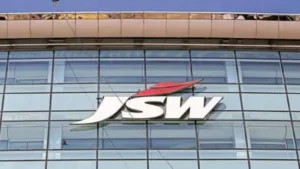Federal Reserve Chairman Jerome Powell said the U.S. central bank is ready to raise interest rates further if needed and intends to keep borrowing costs high until inflation follows a convincing path. to the Fed’s 2% target.
“Although inflation has fallen from its peak — a welcome development — it remains too high,” Powell said in the text of his speech at the US central bank’s annual conference. at Jackson Hole on Friday, Wyoming. “We stand ready to raise rates further if appropriate and intend to maintain accommodative policy until we believe inflation is falling sustainably towards our target.”
The head of the Fed welcomed the slowing rate of price growth achieved by the US economy thanks to tightening monetary policy and further easing supply constraints after the pandemic. However, he cautioned that the process “still has a long way to go, even with recent more favorable numbers”.
At the same time, Powell suggested the Fed could keep rates steady at its next meeting in September, as investors expected.
“Given how far we have come, in future meetings we will be able to proceed with caution in assessing incoming data and evolving prospects and risks,” he said. increase”. Treasury yields fell initially as Powell spoke, with the policy-sensitive two-year yield little changed at 5.04%. The 10-year yield fell to 4.225%. Investors are expecting a rate hike at the Fed’s October 31-November 31 meeting. 1 meeting at about 60%, based on swaps. These remarks are in line with Powell’s personality and communication throughout 2023: he is focused solely on his mission of restoring price stability and further tightening could still return to 2%. if necessary.
New phase
Policymakers are entering a new phase in their campaign to bring inflation back to the Fed’s 2% target. After a strong rate hike in 2022, Powell and his colleagues have slowed down this year and signaled that they may be nearing completion of a rate hike. The question now is how long they will remain limited and how will the economy perform under these conditions.
Officials raised the benchmark interest rate last month to about 5.25% to 5.5%, a 22-year high, after skipping a rate hike at the June meeting. Their most recent projections call for a rate hike this year.
Powell signaled on Friday that the policy has moved into a more deliberate phase, where risk management is now “critical.” He noted that the economy may not slow down as quickly as expected, adding that recent economic output and consumer spending figures have been strong. The economy grew at a 2.4% annualized rate in the second quarter, a surprisingly strong number that prompted many economists to upgrade their forecasts for the third quarter and reconsider recession risks.
“Further evidence of continued above-trend growth could jeopardize further progress on inflation and could warrant further tightening of monetary policy,” Powell said.
He also dismissed speculation that the central bank might raise its inflation target, an idea that has been hotly debated in recent months, mostly by academics. “2% is and will remain our inflation target,” he said.
Inflation has slowed significantly since hitting a four-decade high last year, though still well above the Fed’s 2% target. The central bank’s favorite measure, the personal consumption expenditures price index, rose 3% in June from a year earlier, the slowest pace since early 2021. Fundamental pressures on prices both stronger, with PCE excluding food and energy increasing at 4.1% . . Powell’s speech last year – a brief, precise message to markets about the Fed’s determination to fully restore price stability – made waves for its brevity and conviction. . This year’s debate comes at a time when policymakers are trying to balance the growing risks of continuing to ease price pressures while avoiding a recession.
Fed officials said they expected to keep interest rates tight until they received concrete signs that inflation was approaching its 2% target, but this is a more subjective strategy. and may lead to more open disagreements among policymakers.





